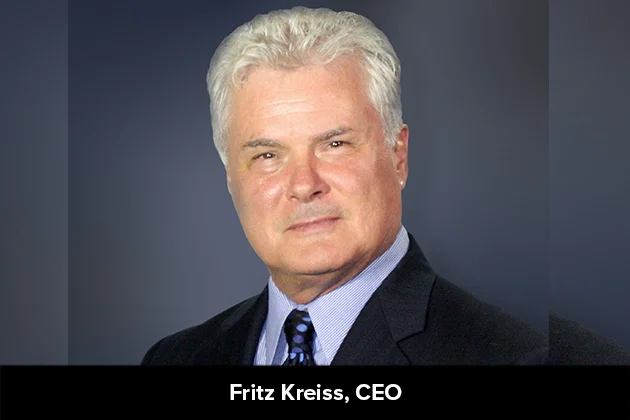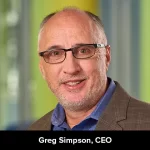Climate change is real and is occurring as a global phenomenon. For organizations worldwide, the need for carbon reduction is becoming a top priority as they look to reduce energy usage and energy costs while improving sustainability. The challenge for organizations however is that they are unable to find ways to expand capital expenditures on energy-oriented projects. Decarbonization will require massive amounts of capital which could change a company’s core use of capital and growth.
Back in 1973, with a Research and Development company that was committed to designing and engineering modular cogeneration systems, the pathway for Onsite Utility Services Capital was carved. Cogeneration generates electricity and captures the waste heat for use at the client’s building. According to Fritz Kreiss, CEO of Onsite Utility Services Capital, even though they had great technology, selling the cogen system was the biggest challenge because businesses tend to use their capital for growing business revenue rather than using their capital for reducing expenses.
When Onsite Utility Services Capital came into the foray, the initial mission was to improve the energy economics for businesses and be better for the environment.
Removing the Capital Conundrum
When Onsite Utility Services Capital came into the foray, the initial mission was to improve the energy economics for businesses and be better for the environment. “Now our mission has changed a little because we are trying to change our entire industry to sell Energy Savings-as-a-Service and not CapEx or debt so we can decarbonize and develop more energy-saving projects”, says Fritz. Onsite does this by removing the CapEx barrier and providing all the project capital that is needed for the project. The ESaaS model that Onsite Utility provides also includes equipment service and maintenance over the service term with the client. The process starts by first visiting the client onsite to assess their facilities at no upfront cost to them. Onsite Utility then engineers energy efficiency solutions and uses its capital to pay for the energy upgrade, measurement, and verification to validate the savings for the client and charges them a monthly service fee that is less than they currently spend. “The biggest difference between Onsite Utility and other competing energy efficiency contractors is our approach of investing in the client’s energy infrastructure. Since we provide the capital, our clients can use their capital to focus on other areas of business growth while still getting facility upgrades, saving energy, improving cash flow and reducing their carbon footprint”, points Fritz. For large and medium-sized organizations, Onsite Utility offers energy and decarbonization retrofits while covering all the costs of project development. “We are agnostic to the way we look at energy savings opportunities based on what our client has onsite for energy and water consuming assets”, he says.
Energy Savings as a Service
As energy costs continue to escalate, buildings that do not carefully manage their energy usage can see operating budgets rapidly increase and end up out of control. Onsite Utility’s role here has been one of vital essence. The firm deploys energy-efficient solutions that can lower organizations’ energy consumption and carbon footprint dramatically which in turn translates to spending less money on electricity, gas, and water. And, with the firm’s Energy Savings as a Service, organizations also eliminate the need to conduct any maintenance or service on any upgraded or newly installed equipment provided by Onsite. The energy audit assesses how a client uses energy and water and the current efficiency of their equipment and then engineers solutions to improve the efficiency of the equipment to maintain customer comfort using less energy.
According to Fritz, chillers for cooling larger buildings nationwide use 20% of all the electricity used annually across the USA but are only being used at their peak cooling load 5% of the time due to the temperature and weather conditions. The fact that they operate inefficiently when they are not running at their peak load is because the CapEx budget to purchase the system bought a cheaper model that runs at fixed output instead of variable output. “We optimize and make the improvements to turn them into energy stars that can save up to 55% of the energy they currently consume by converting to a variable output and controls. Businesses look at the capital upfront and try to minimize it, but in reality, it is the 20 to 25 years of operating the piece of equipment that is the expensive part. The same is true for RTUs or Roof Top Units that heat and cool 60% of all commercial buildings”, claims Fritz.
Added Fritz, “Energy Savings-as-a-Service is going to grow to ultimately be the dominate way clients upgrade their buildings energy and comfort infrastructure allowing businesses to reduce their energy usage, achieve decarbonization while still deploying their capital for growing their companies.” Decarbonization will take massive amounts of capital but through our funding platform, they can reach their sustainability goals and still keep their capital focused on growing the company.
Working Model
Onsite Utility forays onto multiple facets of the business, from developing a sales channel for project development, Investment fund partners for access to capital for the projects, and a nationwide network of energy engineers and contractors for doing audits, installations, and service work locally. With a nationwide network of contractors in the USA, Onsite is now expanding into Mexico and other foreign markets.
On catering to a variety of institutions and industries the firm has learned from its experience over three decades to become an expert in helping organizations seamlessly go through the energy-saving cycle from audit to project completion including service and maintenance over the service term. “It is a constant learning process with a need to continually make adjustments in improving the processes”, says Fritz.
A Guaranteed Future
Energy efficiency and distributive energy companies, partner with Onsite to grow their sales by using the Onsite funding platform to sell more of their own projects too. Instead of our partners hearing it’s just not in the budget this year, the clients now ask how quickly the project can get started. Together, we can impact and achieve our climate goals by removing the CapEx hurdle.












